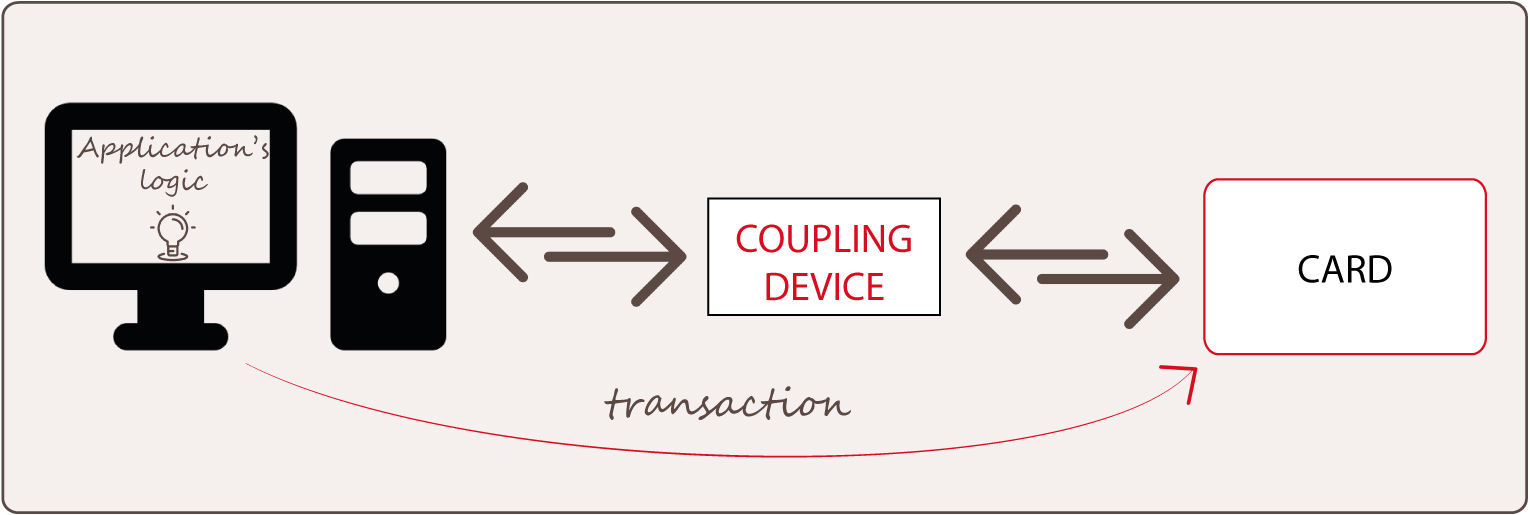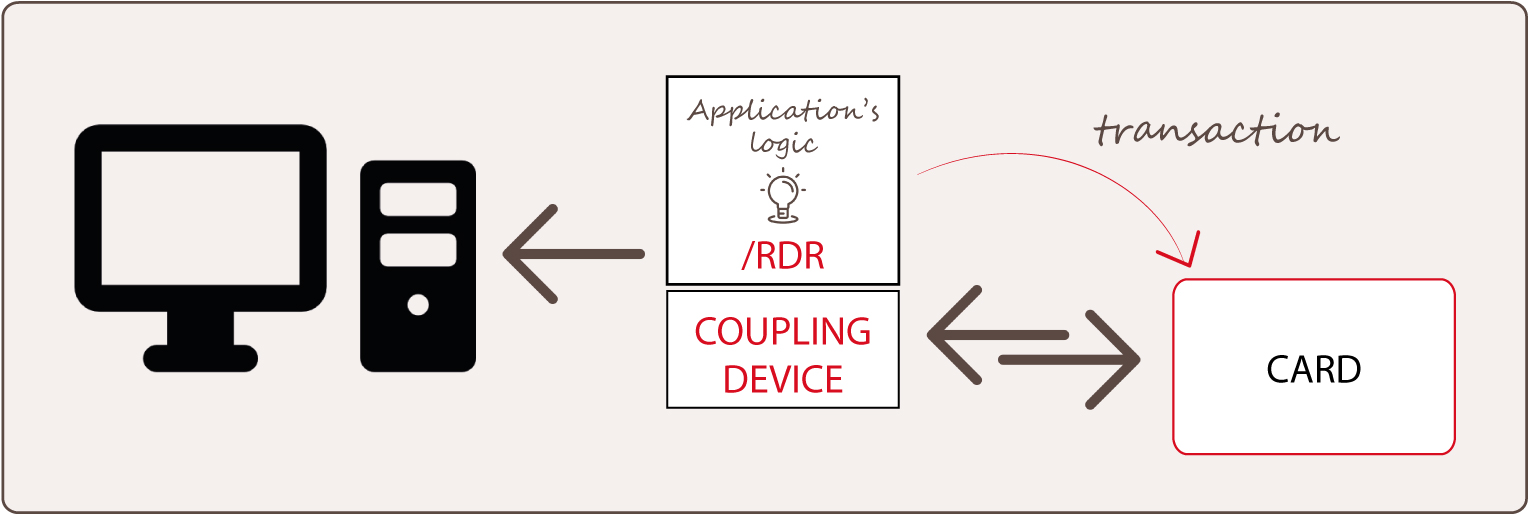'SMART' READER AND COUPLING DEVICE: WHAT IS THE DIFFERENCE?
In the world of contactless and smartcards, the word ‘reader’ is often used for the electronical device communicating with the card. But this doesn’t necessarily indicate what the role of the device is, i.e. how it runs. Let’s make things a bit clearer...
READING, BUT NOT ONLY...
First, you have to keep in mind that a smartcard, either contact or contactless, is not read the same way as a USB file or a floppy disk.
A card responds to certain preregistered commands according to NFC and RFID standards. Often, an authentication process exists which can be encrypted for security purposes.
Some commands are simply reading data, but other commands include writing data, crediting a bank account, checking the validity of a subscription... The choice of commands - which determines the type of transaction to be completed – doesn’t concern the ‘reader’ but the application running it.
COUPLING DEVICE VS 'SMART' READER
The application running the ‘reader’ works on a host system (generally a computer) and understands the ‘reader’ as a technical bridge, enabling it to send commands to the card and receive responses.
This concept of a technical bridge lent the device its name of ‘coupling device’, an expression accepted by ISO standards as proof of it being more than a simple ‘reader’.
COUPLING DEVICE FUNCTION DIAGRAM

The application's logic is provided by such host systems: this allows more possibilities of upgrading.
Cost is therefore related to application development.
'SMART' READER FUNCTION DIAGRAM

The application’s logic is hosted in the ‘smart' reader: this provides faster implementation of commands but upgradibility is limited.
There are many cases where this architecture {coupling device + host system} is not relevant.
This is the case when a host system is not fast enough or doesn’t have enough memory to complete solo transactions with cards.
Another example of when it isn’t relevant is when a card carries more than just a number or short ID: for cost and system upgradibility, the card ‘reader’ needs to be interchangeable with barcodes and magnetic track readers.
SPRINGCARD 'SMART' READERS AND COUPLING DEVICES
You will find here all our 'smart' readers and coupling devices at a glance.
Springcard’s ‘smart' readers are identified by the /RDR suffix added to their name.
The ones which emulate a USB keybord are called RFID Scanners.
You’ll notice many of our coupling devices and ‘smart' readers share electronic parts.
It enables you to shift the running mode simply while upgrading the firmware!